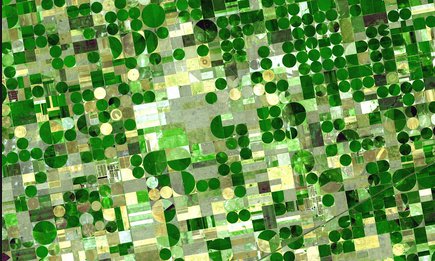Feed the nine billion

Wageningen University celebrates its 95th anniversary this year. For almost a century Wageningen bridges fundamental and applied life sciences. The first rector J.H Aberson already said: “Don’t only focus on technical aspects, but include economic factors as well”. A recipe for success that has barely been altered, University President Aalt Dijkhuizen explained.
The most pressing challenge of the century
The university formulated a simple but very ambitious goal for the next 40 years, it wants to double the global food production. “We have a focus on how to feed 9 billion people in 2050 when all those people will be consuming more meat and dairy products, especially in fast-growing economies like China and India.”
“Food production will therefore have to double in volume”, Dijkhuizen stated at the opening of the academic year. “Doubling production while satisfying the precondition that you minimize the environmental impact is only possible with intensive farming, as efficiency means fewer emissions, fewer natural resources and fewer chemical agents.”
Kofi Annan agrees with Dijkhuizen: “Feeding the majority of the poor and vulnerable populations in Africa, while preserving the natural resource base and the environment, is one of the most pressing development challenges of the century.”
“The international community must take decisive action to aid those hungry today, while also reinvesting in long-term agricultural development to avoid hunger tomorrow. Only in this way will we speed Africa’s overall economic development, foster rural investment, create jobs, and restore the dignity in farming”, the former Secretary-General of the United Nations pleads.
Fine line between utopia and myopia
Professor of Plant Production Systems Martin van Ittersum explains that there is a fine line between utopia and myopia in the future of food production. “In 2008 and right now there are two large spikes in the world food prices. This is good news for many farmers, but it creates unrests and conflicts around the globe”, van Ittersum illustrates.
“There is a clear correlation between conflicts in poor countries and higher food prices. The Arab spring is a clear indication that there is an association between the two.” As can be seen in the graph, conflicts more often occur during periods of high food prices.
“The normalized weed prize has increased steadily from 1750 until the start of the industrialization. In history the highest food prices were paid during conflicts like the American Civil War, the two world wars and the Korean War. After these conflicts the prices went down again.” That might have changed.

Are we at the point of a trend break? “Many pretend to know, but we don’t”, Van Ittersum says. “What we do know is some important trends for the future. In 2050 there will be 2 billion people more and at the same time the per capita caloric demand rises.”
Hungry Planet
“Eating habits will change. In the photo documentary ‘Hungary Planet’ Peter Menszel photographed families surrounded by the food they eat in a week. When people become wealthier they will eat less staple foods and more processed food. There is a lot of conversion needed to get these processed food, far more than for a basic diet based on staple foods, fruits and vegetables. With increased wealth people also tend to eat more animal proteins.”
The increased consumption of processed foods and meat leads to more pressure on agricultural land. On top of that, more and more land is used for the bio-based economy to produce biofuels that compete directly with crops for land.
Three times more food needed?
Currently we produce 7 billion tons grain equivalents of food. In 2050 this will at least have risen to 12 billion tons, but when everybody will eat like a European, we need to produce 23 billion tons. This is three times more than we produce today.
“This sharp increase is not new, it is a continuation of the trend of the past 40 years. New cultivars, irrigation and better pesticides increased the amount of food and feed we produced. Can we do the same again? Probably not.” In some regions of the world you see a plateauing of the yields of important crops, for example rice in Korea or weed in North-West Europe.

Source: WageningenWorld No.4, 2012
Reduce yield gap or eat insects
“We have to do something. We could expand the agricultural area in some regions, but it can’t be done everywhere. The best option is to reduce the yield gap, the gap between achieved and potential yield. A yield gap of 60% means that you achieved 60% of the potential yield. In the Netherlands the yield gap lies between 75% and 87%, which is the maximum you can practically get as a farmer. In Africa on the other hand the yield gap is often around 25%, in South-East Asia for rice between 44% and 71%.”
“The potential production of the Earth lies around 36 billion tons of grain equivalents. The potential production of irrigated land is around 27 billion tons, but I don’t think it is likely that we will achieve that.” Other solutions to increase the potential yield are biotechnology and reducing food losses. Currently 30%-40% of all food is lost in the chain or post-harvest, in the supermarket or at home. Changing our human diets to improve conversion efficiencies, by eating insects as a source of protein for example, could help feed more people.
Meest Gelezen
Vrouwen houden universiteit draaiende, maar krijgen daarvoor geen waardering
Wederom intimidatie van journalisten door universiteit, nu in Delft
‘Burgerschapsonderwijs moet ook verplicht worden in hbo en wo’
Raad van State: laat taaltoets nog niet gelden voor hbo-opleidingen
Hbo-docent wil wel rolmodel zijn, maar niet eigen moreel kompas opdringen

